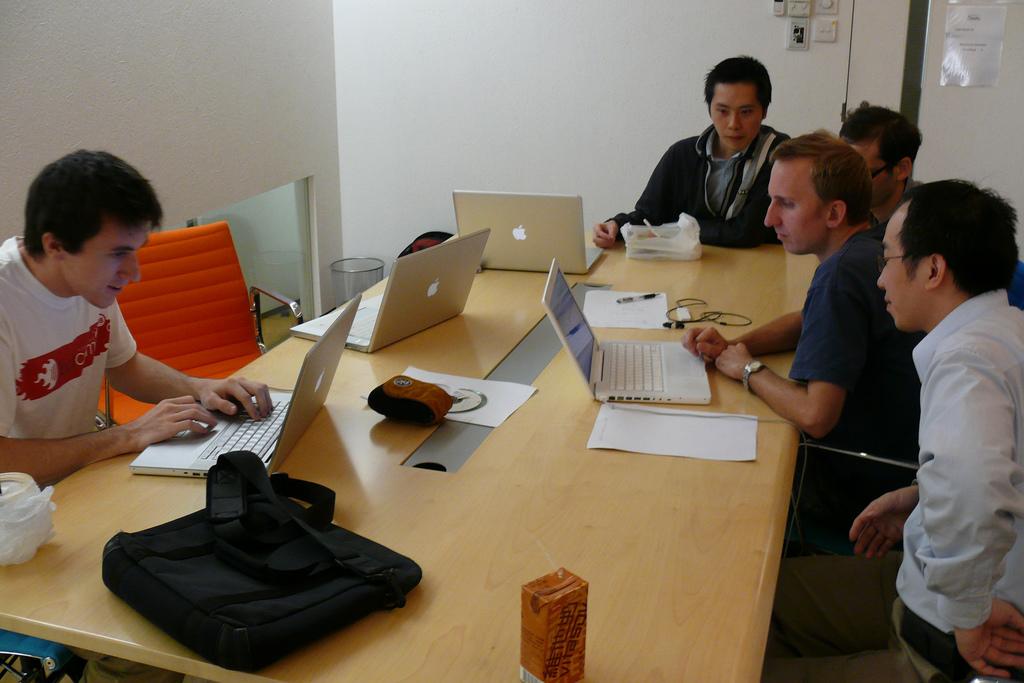
We all know that solving problems on our own isn't always practical. Sometimes you need help, or just somebody else to talk it over with. And you’ve probably also experienced the phenomenon that the best way to learn something yourself is to teach it to someone else. Put those two ideas together, and you’ve got a Revit user group. In-house discussions can be a great way to pool your team’s collective knowledge and expand your understanding through teaching. Here are five tips to starting a successful user group for Revit training at your office.
1. Set a Regular Meeting Time. This may sound overly simple, but seriously—get it on the calendar. If you can set the expectation that the Revit meeting is always on this day at this time, people are more likely to remember it. Use Outlook (or your calendar program of choice) to create a recurring meeting at regular intervals. You might pick Thursdays at noon, or Wednesdays at 11:30, or the third Tuesday of every month. The when is less important than picking a date and sticking to it. Don’t cancel too many meetings, or people will start expecting you to cancel!
2. Invite Everybody. Don’t be stingy with your invitations. Make sure every current or potential Revit user in the office knows she’s welcome to join the discussion. Even if somebody isn’t using Revit yet, it’ll be a way for him to broaden his experience and start to learn the “language” of BIM. You might also gain some new perspectives on Revit—what’s obvious about the software to you may not be as plain to someone just starting out.
3. Have an Agenda. Whatever you do, don’t show up at your Revit meeting without a list of things to talk about. It might be tips you’ve seen on blogs, questions you’ve been asked that week, or real-world challenges that your team recently solved. Bring as long a list as you can—it’s far better to have too much material than too little. One way to do this is with a shared document or list that everyone can add topics to, then check them off as you cover them in the meetings. If you don’t get to something in one meeting, save it for the next.
4. Encourage Discussion. The best Revit groups aren’t lectures. You may be the smartest Revit-eer in the room, but these meetings aren’t the place to prove it. Instead, present your tip or issue, then invite your group to talk, question, and debate the information they’ve been given. There’s almost always more than one way to accomplish a task in Revit. By opening up the floor to your meeting participants, you get to talk about the pros and cons of each way, and maybe settle on a preferred way to include in your office Revit manual. (But that’s a topic for another day.)
5. Share the Responsibility. Even if you’re leading the group, you don’t have to do all the work yourself. Ask your group members to prepare a short tip or example to present every so often. Keep it low-key (no PowerPoint!), but encourage everybody to share their experience. You get a bit of a break, and your team gets the opportunity to build their own expertise. Keep it up, and eventually your team will be entirely composed of experts!
Check out Cadalyst’s article on The Peer-to-Peer CAD Manager.
For more tips on running effective meetings, check out 3 Ways to Stop the Meeting Plague and Improve Productivity.
By Kate Morrical
photo credit: nicwn via photopincc
This article was originally published on Line//Shape//Space, an official Autodesk blog, and is reprinted here with minor modifications and with kind permission.
















































